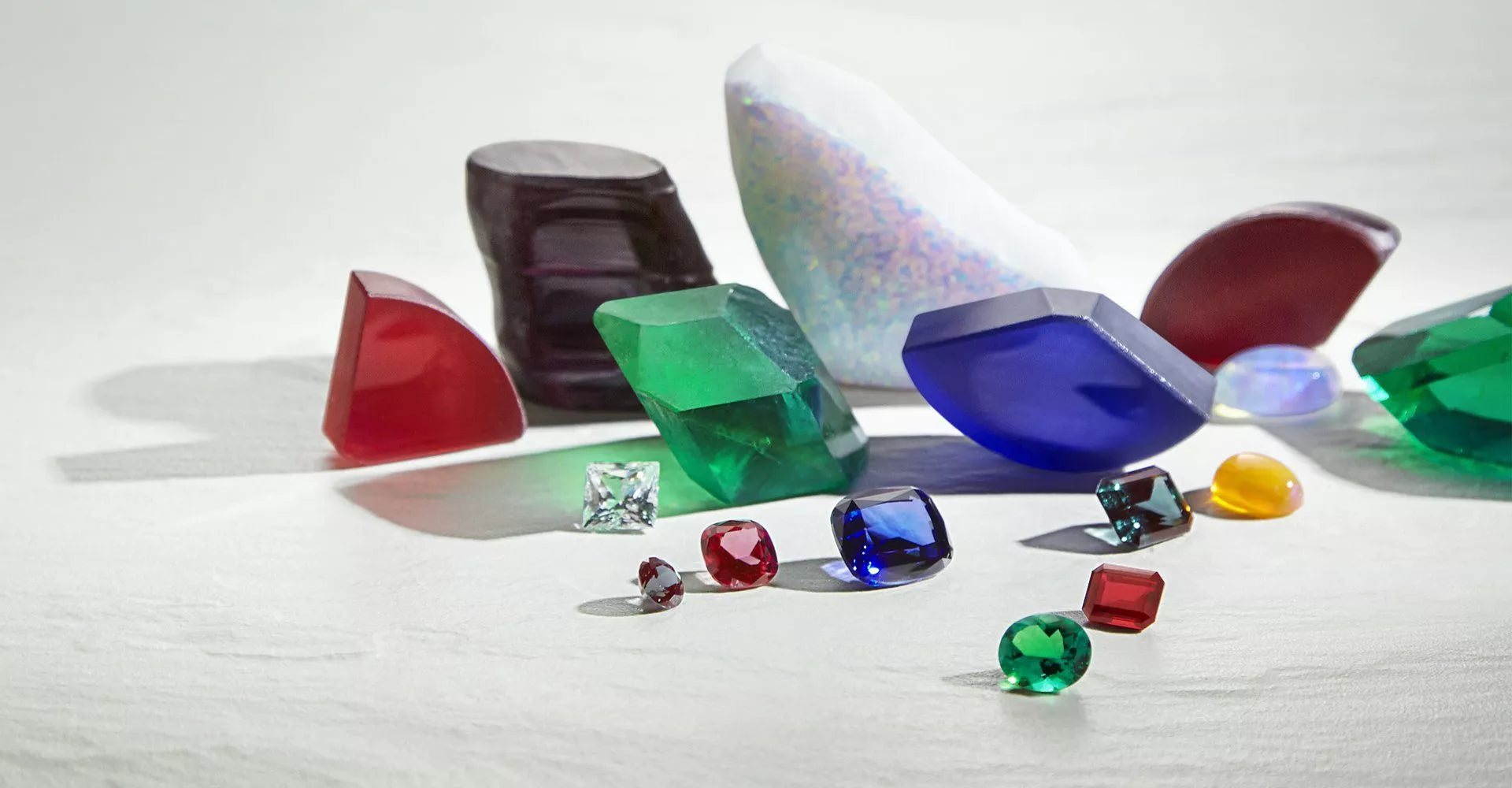
Natural Vs. Lab-Grown Gems: Which Is the Brighter Investment?
The gemstone industry has been witnessing a remarkable development in recent years with the emergence of lab-grown gemstones, particularly lab-grown diamonds. These gems, also known as synthetic gemstones, are meticulously crafted in laboratory settings to replicate the qualities of natural gemstones but often have a more affordable price.
Understandably, this presents today’s consumer with a somewhat challenging question when it comes to selecting a gemstone for investment. Do I choose one of the Earth’s most exquisite and rare creations, or a synthetic gemstone that offers a similar visual appeal to its mined counterpart but for less?
This article will serve as a guide to help you assess the value difference between the two by exploring factors such as current market demand for natural versus synthetic gems, ethical and environmental considerations, and the long-term implications of your decision.
Market Dynamics for Natural Vs. Synthetic Gems
When choosing between natural gemstones and synthetic gemstones as an investment, market demand is a critical factor to consider.
Natural gemstones, whether they’re colored stones or diamonds, have an enduring allure rooted in their singular beauty, distinctive qualities, provenance, historical significance, and more limited availability, making them perennial favorites in the gemstone and jewelry markets.
In contrast, synthetic colored stones, despite being accessible for more than a century, never captured the attention of the market and consequently trade at lower values than their natural equivalents due to a lack of demand.
Synthetic diamonds, on the other hand, are currently garnering significant attention, particularly in the engagement ring market, where they offer a novel and attractive choice for those prioritizing budget over long-term investment. As such, lab-grown diamonds can be an excellent option if you seek a visually pleasing yet more affordable diamond.
However, if you’re looking for long-lasting value, natural gemstones remain the preferred choice for those who appreciate the timeless appeal and return on investment they offer.
Eco-Ethical Assessment of Each
Ethical and environmental considerations are also important factors when deciding between natural and lab-grown gemstones as an investment.
It’s essential to recognize that neither option is inherently more environmentally friendly, and ethical concerns can arise on both sides of the spectrum.
Natural gemstone mining practices vary widely, from responsible large- and small-scale operations that prioritize sustainability and workers’ well-being to operations that exploit laborers and cause environmental harm. Therefore, when considering natural gemstones, it’s crucial to research the source and mining practices to ensure they align with your values.
On the other hand, the production of lab-grown gemstones can indeed be significantly energy-intensive, which doesn’t align with eco-friendly principles. Consequently, it’s important to scrutinize the environmental impact of the specific synthetic gemstone you’re considering, as production methods can vary among manufacturers.
In addition, it’s essential to acknowledge that the rise of the lab-grown gem industry has had broader socio-economic implications. Many communities and individuals who rely on the natural gem industry, from miners who extract precious stones to skilled artisans involved in cutting and polishing, have faced economic challenges due to the increasing popularity of synthetic gems. This disruption raises ethical concerns about the well-being of these communities and the livelihoods of those dependent on natural gemstone production.
Ultimately, ethical and environmental implications, as well as socio-economic considerations, should be carefully weighed when making your choice. Investigate the origin and practices associated with natural gemstones and the production processes of lab-grown gems. By doing so, you can make a well-informed decision that aligns with your ethical values and minimizes your environmental footprint.
As Synthetic-Gem Technology Advances
As technology progresses, the field of synthetic gemstone production continues to make strides. However, despite these advancements, there remains a crucial distinction between natural and lab-grown gems that’s a formidable endeavor to replicate—the authentic appearance of a gem that was created by intricate natural processes over millions of years.
Moreover, trained gemologists, armed with specialized equipment and a wealth of expertise, are adept at discerning the disparities between natural and synthetic gems. They can meticulously analyze subtle differences in gem properties such as growth patterns, inclusions, and optical characteristics that distinctly set natural gemstones apart from their lab-grown counterparts. In essence, any attempt to present a synthetic gemstone as its natural counterpart doesn’t go unnoticed or undetected by experts in the field, particularly when it comes to capturing the genuine, lifelike allure that natural gems exude.
Therefore, the undeniable truth remains that natural gemstones represent a superior investment choice. They embody nature’s artistry, forged over eons in the Earth’s embrace. In contrast, lab-grown gems, while impressive, fall short in capturing this essence. When it comes to investments of enduring significance and unmatched value, natural gems reign supreme, preserving the legacy of our planet’s geological history in every sparkling facet.
Your Investment Choice Long-Term
Ultimately, the decision to invest in a natural gem or a synthetic one depends on your priorities and values. If you seek an affordable gemstone with the appearance you desire and are less concerned about long-term value, lab-grown gems might be a suitable choice. However, if you desire an asset with inherent value, historical significance, and the enchanting beauty of a natural gem, investing in a natural gemstone is highly recommended.
Choosing between natural and lab-grown gems is a personal decision. By considering market trends, ethical and environmental factors, and the long-term implications of your choice, you can make a well-informed investment decision that resonates with your preferences and values, ensuring that the gemstone you choose truly reflects your desires and intentions.


